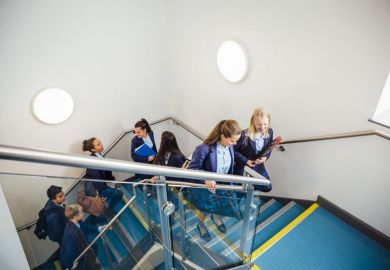Several leading Australian universities are bracing for a one-off hit to their enrolments just as they emerge from a two-year funding freeze.
The University of Queensland said that it was forecasting a 16 per cent decline in its domestic undergraduate intake in 2020, as the impact of a change in the state's school starting age, introduced in 2008, hits tertiary enrolment. A spokeswoman said this would translate to a funding shortfall of about A$90 million (£49 million) between 2020 and 2025.
Overall, the number of students matriculating from Queensland’s secondary schools is expected to plunge by about 30 per cent next year. A similar downturn in Western Australia in 2015, caused by school reforms 12 years earlier, triggered a 25 per cent drop in applications to the state’s higher education providers.
There, universities compensated by increasing their direct offers to older students, limiting the average fall in domestic undergraduate enrolments to about 10 per cent.
But Queensland faces its school-leaver slump just as unmet demand for university study has been all but soaked up, and after the federal government froze teaching funds for two years at 2017 levels.
This means that institutions will not be able to insulate themselves from future losses by increasing their enrolments in the lead-up to 2020. The impact is expected to be greatest at Brisbane universities, including The University of Queensland, which harvest a large proportion of their students directly from school.
Queensland University of Technology would not say how much the downturn would cost it in terms of enrolments and income. But multi-campus Griffith University said an estimated 11 per cent downturn in domestic undergraduate enrolments would cost it about A$60 million.
Peter Bryant, vice-president of corporate services at Griffith, said reforms to Griffith’s programmes and calendar – including the introduction of a third academic term and common foundation years for key degrees – had increased its share of undergraduate first preferences in last year’s “slightly declining market”.
He said that Griffith had projected even stronger growth this year. But the funding freeze had not only prevented the university from accommodating that growth but also removed “vital” funding for an enabling programme at Griffith’s Logan campus.
Logan, nestled between Brisbane and the Gold Coast, is a rapidly growing belt of low-socio-economic suburbs where many students are mature-aged people looking for a new start. Times Higher Education understands that the campus’ projected downturn in undergraduate commencements in 2020 – about 5 per cent – is considerably less than the 11 per cent expected at Griffith’s Gold Coast campus and losses of up to 17 per cent predicted in Brisbane.
But Mr Bryant said Logan’s enabling programme was an “important pathway” for students who had no other way of getting into university, and that Griffith would be seeking additional places for the Logan campus.
Other universities have already lobbied successfully for extra places despite the funding cap. The University of the Sunshine Coast, north of Brisbane, last month extracted a promise of an extra A$69 million to support a new Petrie campus opening its doors in 2020.
Across the border in New South Wales, Southern Cross University procured an extra A$13 million for health training places. However, metropolitan institutions appear less likely to be able to secure these sorts of sweetheart deals to help them navigate the 2020 trough.
Register to continue
Why register?
- Registration is free and only takes a moment
- Once registered, you can read 3 articles a month
- Sign up for our newsletter
Subscribe
Or subscribe for unlimited access to:
- Unlimited access to news, views, insights & reviews
- Digital editions
- Digital access to THE’s university and college rankings analysis
Already registered or a current subscriber?












